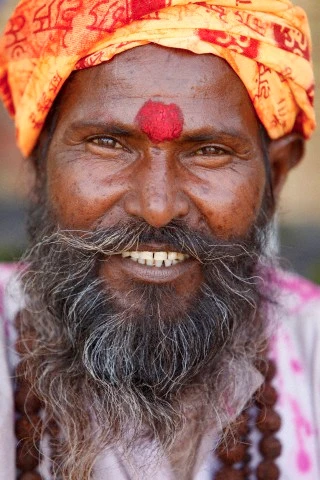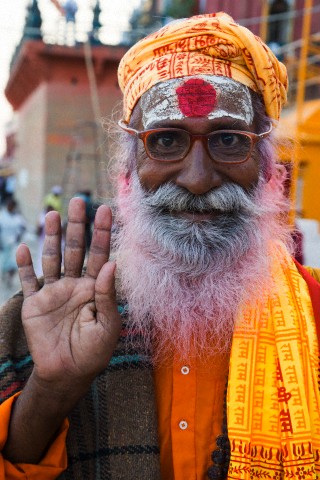
In my post of last Wednesday, “Bindi – More than Just A Red Dot” I wrote about importance of putting a Bindi on the forehead, and significance of the place where we put our Bindi. A simple tradition which started with roots so deep in spirituality, has now taken an altogether different aspect and is presently worn to express more of our fashionable quotient.

In today’s post I want to write about relevance of color associated with Bindi.
Firstly, Bindi is not associated with women only, but men too used to put a Bindi on their forehead, more popularly known as Tilak. Hindu men put Tilak on their foreheads on auspicious occasions or while praying to God.

In ancient times, Bindi of varying colors were used for categorizing men with regard to their place and role in Varna/caste system. Point to note here is that, this Varna System has nothing to do with the caste politics that is preached or executed today. Infact it was based on the roles of a person in the society and not merely on birth.

So Brahmins, who at that time were considered as teachers and priests, used to wear a White Sandalwood Tilak on their forehead. White being the color of purity and of divinity, suited this categorization.

Kshatriya or Raajputs, used to wear a Red Tilak on their forehead, as they belong to the class of Kings, warriors, ministers and administrators. Red being the color of passion, courage and of heroism, deserve nothing less than belonging to Kshatriya Varna.

A Yellow Tilak was used by the Vaishya Varna of the society, as they were the businessmen, traders and man of the markets, in the society. Yellow being the color of practicality and prosperity was chosen for Vaishya Varna.

Shudra Varna of society, which was the service class of society, adorned Black Tilak on their forehead. This tilak has more to do with availability and inexpensiveness of color black, as ashes to peasant class, with respect to expensive sandalwood and kumkum. Black color was used to denote service class.
These four Varna used four different colors of Bindis/Tilak, in earlier times. When it comes to women, they usually wore a Red Kumkum Bindi, if they are married. An unmarried girl usually wore no Bindi, but if she does, she used a black one. A widow or a women who never wished to get married, used the sandalwood white bindi.

This distinction also has its reasons. Red is color of Love, and a married woman while wearing a Red Bindi, represents and proclaims her love towards her husband. When she is unmarried, she is thought to be as in, not in love with anyone, and ash which was used as black color Bindi earlier, denotes no worldly love. A sandalwood white Bindi was adorned by widowed and priestesses, to show their love towards divinity, the God. Interchangeably they have used Black Bindi too.

In south of India, a different combination of color is used to worn a Bindi on Forehead, wherein a black horizontal line is drawn along with a Red Bindi, on a forehead.
Black again is the color taken from ashes, which represents Shiva. Shiva himself is depicted covered in ashes all the time, as he is beyond the worldly desires. While Red Bindi, here signifies Shakti, the ultimate energy. This kind of Bindi denotes the super fusion of both Shiva and Shakti into Aadidev Ardhnaarishwar. 
Now that I have written almost everything about the grandness of color in a Bindi, I must tell you that all that I have written was practiced before. At present, Bindi is more of an accessory. We chose color of Bindi to match as per our outfit and nothing more. Unmarried girls happily adorn a Red Bindi, and so does Married women don’t flutter their eyes while wearing a black or white Bindi.
 Only difference being, no more kumkum, sandalwood or ashes are used to make a Bindi, rather a glue or some cheap material is used today to make a modern Bindi. But who is complaining? Not me. 🙂
Only difference being, no more kumkum, sandalwood or ashes are used to make a Bindi, rather a glue or some cheap material is used today to make a modern Bindi. But who is complaining? Not me. 🙂







One thought on “Wednesday Words – Bindi – What does Color Of Bindi Signifies?”